Ensuring CCE/AAP expertise into the future
- 07/07/2020


COVID-19 has made communicating and engaging with communities in humanitarian contexts ever more urgent as the virus spreads. The CDAC Network has been ensuring the response – both that to the pandemic, and the associated wider-than-health response – is staffed with communication and community engagement (CCE) experts.
Implementing the recommendations from the CDAC assessment of CCE-related surge capacity, the Network is rolling out elements of its global programme to boost surge capacity, in order to increase the quality and predictability of response-wide community engagement in disaster management. The programme, components of which are funded by UNICEF, is being implemented in cooperation with CDAC Members. Roll-out is geared towards:
- Enhanced surge capacity through existing Standby Partnership (SBP) partners and embedding a future-proof systematic approach to aiding the sourcing and training of personnel, addressing specific and identified gaps in the fulfilment of global CCE/AAP commitments.
Further development of the capacity building component, building on CDAC’s existing capacity strengthening tools and drawing from CDAC member and partner CCE/AAP expertise; and,
A strengthened CDAC internal CCE/AAP expert pool to provide continued capacity support to the sector beyond the project end.
In recent months, three generic terms of reference (ToR) were developed for surge deployment to support Accountability to Affected Populations and Communication and Community Engagement in humanitarian operations. It involved harmonising existing CDAC surge TORs and consulting with global and in-country experts, including the IASC Results Group 2 and CHS Alliance. The TORs reflect the three most common AAP/CCE roles that are requested by humanitarian responses, which are:
- An agency focused ‘Technical Officer’ role to improve agency performance on AAP/CCE.
An inter-agency ‘Coordinator’ role, facilitating a working group or similar platform on AAP/CCE.
An inter-agency ‘Senior Advisor’ role focused on supporting the humanitarian architecture and senior management in the development of a collective approach to AAP/CCE.
Lack of coordination skills training was identified as a priority gap during the surge consultations. Building on CDAC’s existing training package, an advanced Coordinator-level training was developed and piloted in Nairobi 21-24 January 2020, with 25 participants from UN agencies, INGOs, Red Cross/Red Crescent, and community-based organisations. This will be further built on over the coming 24 months.
A key surge deliverable is the starter Orientation paper Information management for coordinated community engagement, which outlines the information management functions of an inter-agency AAP/CCE working group. It also serves to orient an AAP/CCE Coordinator as to the information management tasks that they may need to complete, in the event that an Information Management Officer (IMO) is not available or deployed. The guidance is a resource developed for AAP/CCE Information Management Officers, CCE practitioners and decision-makers requesting AAP/CCE surge support (as an advocacy tool around the need to deploy IMOs to support the CCE Coordinator).




















